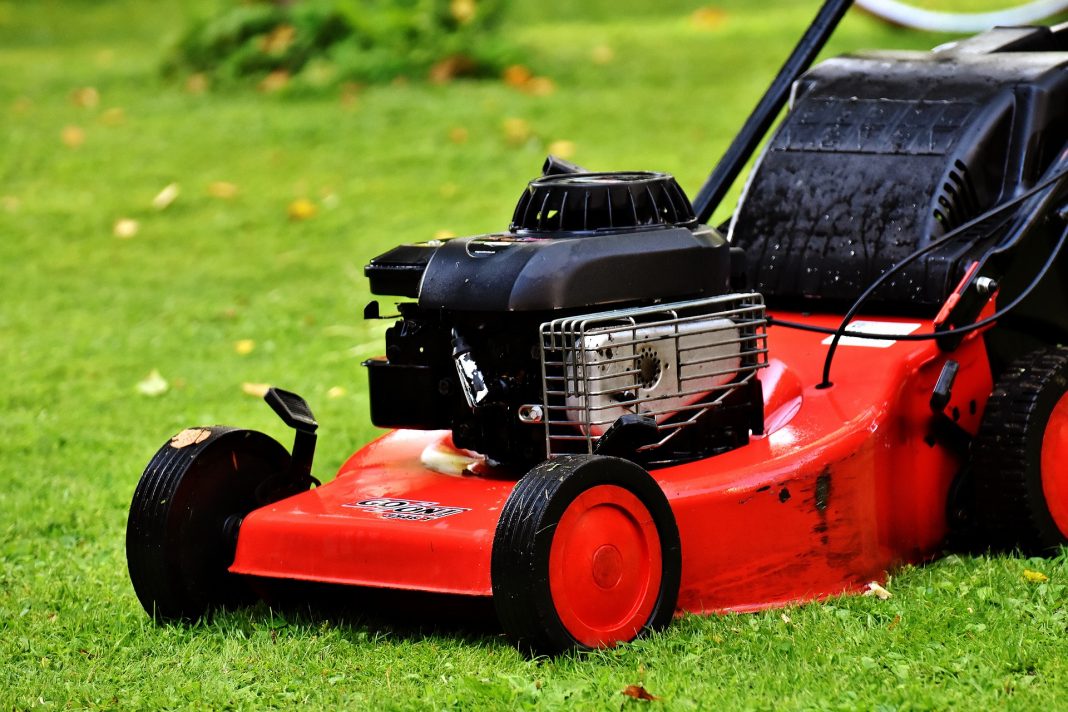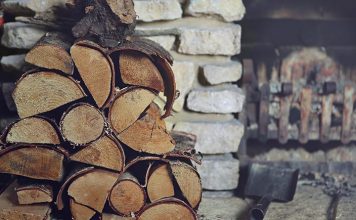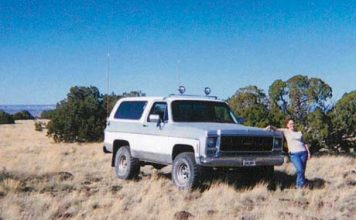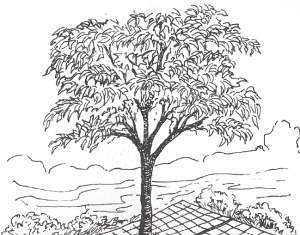| Issue #24 • November/December, 1993 |
How many small engines do you have on your homestead? I counted mine the other day and came up with eight. These engines help me live a simple life out in the boonies. They do jobs for me that make my life easier and save me lots of energy, which is very important as I am disabled and over the hill in age.
These tools make it possible to continue to live the lifestyle I have chosen. Seven of the eight engines are five horsepower, or under, and pump water, blow snow, generate electricity, till the garden, cut brush, cut firewood, and propel a small boat.

All these engines must run, and do the jobs they were designed to do, or my survival is in question. For those of you who also have small engines around the homestead, who rely on them as I do, this article is written to help you keep them maintained and to help you diagnose a problem if it does occur. There’s nothing more frustrating to me than to be out fishing and the engine won’t start or going to the woodlot only to find the chainsaw starts, but runs roughly or sputters and dies. Instead of getting your chores done, you end up driving into town to your local repair shop.
Today’s small engines are rugged little critters, and I’ve found that because of that fact, most people neglect them. Where they change the oil religiously in their automobile, they don’t on their lawnmower. They take their car in for a tuneup, but don’t remember the tiller. This neglect is the main reason their engines fail, or do not run for their rated life expectancy. Recently a friend brought me her tiller and asked me to look it over to see if it could be repaired. My diagnosis? It was a disaster. Why did it fail? It failed because the air cleaner had never been changed. This five hp Tecumseh engine literally ground its innards to death because of dirt that got into the combustion chamber. On top of that, the oil in the crankcase had never been changed. Just topped off when it was low. The oil lost its ability to lubricate, and was full of grit particles and dirt. That’s death to engines.
Two types of engines
I asked her why the engine was allowed to get in this condition and she replied that her husband was in charge of engines and she had no working knowledge other than using the tiller in her garden. I gave her some small tips on maintenance procedures and showed her the engine and why it failed. She apparently went home and advised her husband that a $3 filter and a dollar in oil on a regular basis would have saved their $750 tiller from the junkyard. About two weeks later I saw her in the grocery store and she proudly told me the chainsaw wouldn’t start the week before, and she fixed it herself.
So ladies, you can learn a camshaft from a crankshaft, and how to maintain your engines. It is not beyond your comprehension. So this is especially written for you.
Small engines are of two types. Two stroke or four stroke. At this point, the only reason this is important to you is the lubrication methods are different. The two stroke requires you mix the oil with the gas. The four stroke is like your auto engine. There is a separate compartment for the oil and a separate fuel tank.
To identify them, two stroke engines are generally used on chainsaws, weedwhackers, and other tools that are used at many angles. Chainsaws are a great example of this. Think about all the various angles in which a chain saw is required to run when cutting down a tree. Upside down or 90 degree angles aren’t uncommon. So having the oil mixed with the gas keeps the engine lubricated no matter how it’s tilted or angled.
Four stroke engines are usually found on tools such as lawnmowers which stay horizontal most of the time they are in service. Thus the oil stays in the bottom of the crankcase where slingers or
other mechanical parts distribute the oil to the areas of the engine that require it. Another easy way to know is, generally, two stroke engines are on tools you must lift and carry, i.e., chainsaws and weedwhackers. They have many fewer parts than a four stroke engine so they are lighter. Four stroke engines are on tillers and most lawnmowers.
The oil is not only a lubricator, it also helps with heat transfer. Small engines run very hot and are generally air cooled, so it’s imperative the oil is mixed in the proper proportions in the gasoline (two stroke engines), or kept clean and up to the required level in the crankcase.
Engine cooling vital
Inadequate cooling is the second most prevalent reason for engine failure. First, keep the engine clean. It’s a simple procedure. After using the engine in the garden or mowing the lawn, let it idle under no load for a few minutes to let it cool down for a while before you turn it off. This is very important. As I said before, these critters run very hot, especially if they’ve just tilled heavy soil or cut high grass. Letting them cool down to normal operating temperatures before turning them off will allow the metals to cool down slowly. It will add many hours to the life expectancy of your engine.
After turning it off, let it cool and then clean all the dirt, twigs, and grass off the cooling fins and the engine block. These engines “cool themselves” by radiating heat into the surrounding air. If they’re covered with matted grass clippings, dirt and oil, they can’t cool.
Second, never remove the engine shrouds. They aren’t put there for looks. They are designed to channel air around your engine to help it cool. I can’t tell you how many people take these sheet metal shrouds off the engine because grass clippings get caught in them, and think they are helping their engine to cool.
Think of the system on your small engine like the air conditioning ducts or heat ducts from your furnace or air conditioning system. The ducts provide passageways to move hot or cold air where it’s needed. The engine has the same kind of system. The flywheel acts as a fan and forces air into the shrouded area around the engine, thus carrying off the heat as the cooler air races by. By removing the shroud or not repairing dents to it, you are defeating the cooling system.
Fuel mix
Now let’s get to fuel and fuel mix. As we learned earlier, the two stroke requires you mix oil with the gas. This really can be confusing, especially if you have three or four engines that require different ratios in the mix. You will find the ratio mix in your manual that came with the engine, or many times it’s printed right on the gas/oil tank cap.
There are two firm rules on this. Use only two stroke engine oil in two stroke engines. Do not use car engine oil like SAE 10W-30W, or the like. Two stroke engines burn oil and are designed to do this, and require the proper oil in the gasoline. Mix the gasoline and oil thoroughly, and I mean thoroughly. One great method is to take your gas and oil can to the gas station and make the mix right there at the pump. Fill the gas can about 1/3 full and then add the proper amount of oil, then fill the container. The gasoline pumping quite rapidly out of the nozzle mixes the oil and gas together quite well. Later when you go to fill your tiller or generator, shake the gas can vigorously before filling the tank.
The oil must be in very small particles and suspended evenly in the mix, so the engine gets lubricated evenly. If the oil is not mixed thoroughly, the engine starves for lubrication, and the spark plug gets big “globs” of oil stuck on it so it can’t fire. You’ll spend wasted time taking out the plug, cleaning and drying it to keep your engine running.
Gasoline is also important. Head for your manual for types of gasoline and octane rating your engine requires. Some older engines require leaded gasoline. Most of the newer engines run on leaded or unleaded.
Once gasoline is on hand, use it. Don’t buy 10 gallons of gasoline and use five gallons per year to mow your lawn for two years. Gasoline allowed to sit gets stale and gummy. This gummy stuff sticks especially to carburetor parts and air passages which eventually will restrict air flow, thus changing the air-gasoline mixture that’s required for good engine operation. This simple precaution will save you a lot of downtime and lots of money. A replacement carburetor or a carburetor rebuild will cost you $25 to $50. Using gasoline within 30 days, as you can see, is very cost effective.
Benefits of simple care
This article has been very simplistic in nature and gives you very basic information on small engines. If followed, it will save you lots of downtime and lots of expense. On one hand, I appreciate people who don’t maintain their equipment, as it is a means of income to me. But on the other hand, I hate waste. As an ad for oil filters says on TV: “You can pay me now, or you can pay me later.” You can do simple maintenance like cooling slowly, changing oil, proper fuel mixing, changing air filters, all for little or no cost.
Why pay me, or another technician, lots of money for a valve job, carburetor rebuild, or engine overhaul that’s needed because of neglect? Today’s small engines are rated for approximately 1000 hours of life expectancy before complete rebuilding or replacement is necessary. That doesn’t sound like a lot, does it? But figure how you use your lawnmower. Two hours a week for a six-month season would be about average, or 48 hours a year. At this rate your engine could last 20 years.
Simple home maintenance coupled with a couple of trips to a small engine technician for tune-ups and inspection over that 20-year life can save you lots of money and your engine will roar to life and do its job consistently.
If you have no manual for your engine, either go to a small engine sales shop and request one or write the engine manufacturer directly. If you have an old engine, when writing the manufacturer, tell them the information that’s on the engine specification plate. If you can find no plate, tell the manufacturer what machinery the engine powers and the approximate age. This will help them get an appropriate manual to you.















Most manuals for anything (mower, chainsaw, your smartphone) are available free online. YouTube also has do-it-yourself videos for maintenance of cars and mowers. Good to know and use. Don’t guess, look it up.
Speaking as a 50-some years old woman, this is one of the most helpful articles I’ve ever read. My parents declined to let me take a car maintenance class way back when vo-tec was still a part of the highschool system, and I’ve had occasion to regret it since — but at least I know the vital importance of changing the oil on schedule and getting problems fixed sooner rather than later. Thanks!